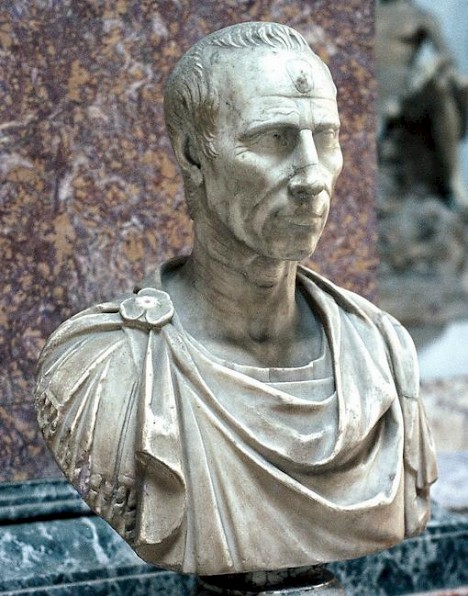Rubico (49 BCE)
Q25238182Rubico: little river in northeastern Italy, once the border between the Roman province Cisalpine Gaul and Italy proper. Crossing the river with an army, as Julius Caesar did in 49 BCE, was identical to invading one's own country.

In January 49, Julius Caesar crossed the river Rubico, the boundary between his province Cisalpine Gaul and Italy. In his company were soldiers of the Thirteenth legion, and their presence made the crossing of the river an act of treason. Caesar was well aware of this, as Appian of Alexandria indicates:
Caesar mounted his chariot and drove toward Ariminum, his cavalry following at a short distance. When his course brought him to the river Rubico, which forms the boundary line of Italy, he stopped and, while gazing at the stream, revolved in his mind the evils that would result, should he cross the river in arms. Recovering himself, he said to those who were present, "My friends, to leave this stream uncrossed will breed manifold distress for me; to cross it, for all mankind." Thereupon, he crossed with a rush like one inspired, uttering the familiar phrase, "The die is cast: so let it be!" Then he resumed his hasty journey and took possession of Ariminum about daybreak, advanced beyond it, stationed guards at the commanding positions, and, either by force or by kindness, mastered all whom he fell in with.note
That familiar phrase, the ancient reader will have known, was from Caesar's favorite poet Menander. Having cast his die, Caesar was now marching against the Senate (text), which sought military leadership from general Pompey the Great.
Caesar was swift: seeing that Pompey's army was in Hispania, he decided to strike at "an army without general" first, then returned to Italy, crossed the Adriatic sea, and defeated "a general without army" in August 48 in the battle of Pharsalus. The Roman republic had come to an end.

The identification of the Rubico is contested. The Peutinger Map says that the river was twelve Roman miles (18 km) northwest of modern Rimini; following the course of the ancient Via Aemilia, we would arrive in Savignano, and the little river - which has been known as Fiumicino since times immemorial - was consequently rebaptized in 1933. The statue of Caesar on the old bridge was added at the same time.
However, written sources indicate that the river has changed its course several times. Personally, I think that the presence of the ancient bridge proves that the watercourse of the Fiumicino/Rubico was already in existence long time ago. Savignano must be the place where, according to Livy, Caesar and the Thirteenth "assailed the world".